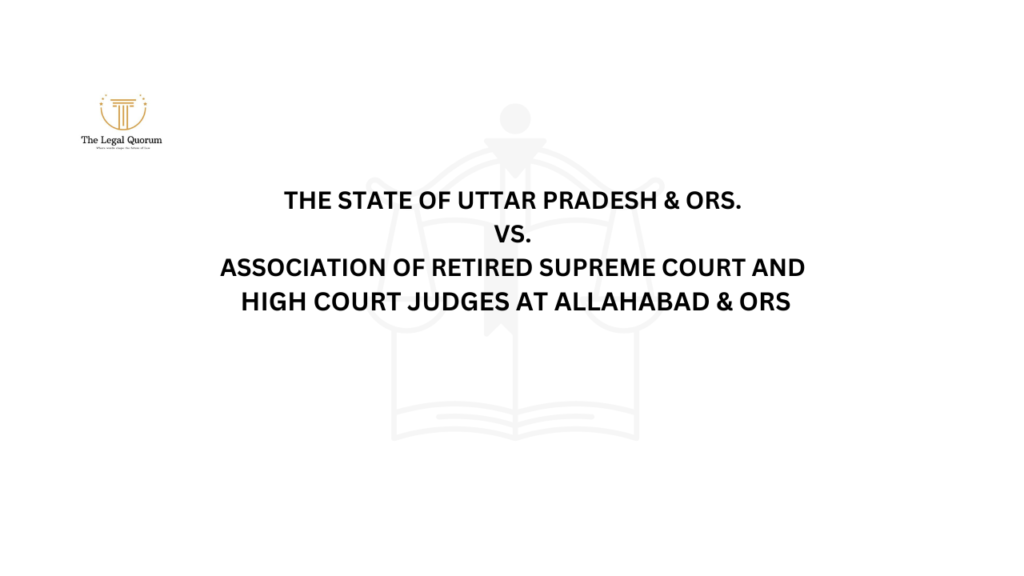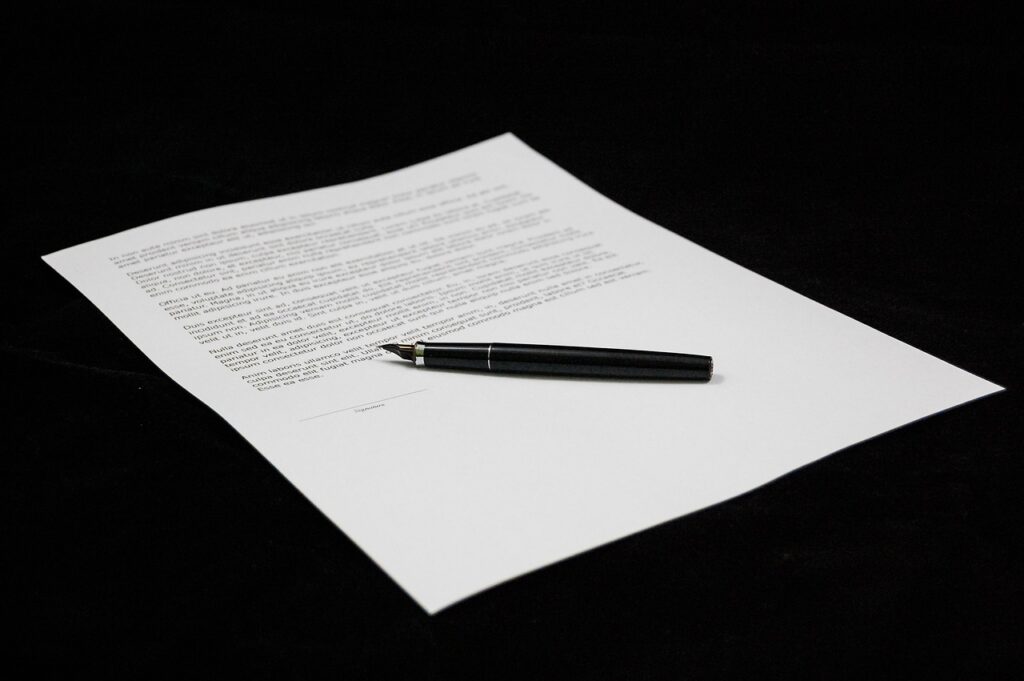Published On: November 22nd 2025
Authored By: Nitya Ramachandran
Government Law College, Coimbatore (Affiliated to TNDALU)
Citation: AIR 2013 SC 1311, (2013) 6 SCC 1
Court: Supreme Court of India
Bench: Justice Ranjana Prakash Desai, Justice Aftab Alam
Date of Judgement: April 1, 2013
Relevant Statute(s):
The Patents Act, 1970
-
Section 2(1)(j)
-
Section 2(1)(ja)
-
Section 3(d)
Brief Facts
The appellant was a pharmaceutical company called Novartis A.G. who sought to patent their drug, marketed under the names “Glivec” or “Gleevec”. The drug contained beta crystalline form of a chemical compound called Imatinib Mesylate, which was a therapeutic drug for chronic myeloid leukemia and certain kinds of tumours. The Appellant claimed invention was a two-stage process that involved initiating with Imatinib in its free base form, which was then processed to create Imatinib Mesylate to develop its beta crystalline form. The said free base form of Imatinib was previously invented by Jürg Zimmermann, which was granted patent, named the “Zimmermann Patent”.
Novartis filed the patent application at the Chennai Patent Office on July 17, 1998, with a priority date of July 18, 1997, from Switzerland. At this time, India’s patent law for product patents was in a transitional phase, operating under a “mailbox procedure”. Later in 2005, as part of complying with the TRIPS Agreement, The Patents Act, 1970 was amended that redefined provisions for “invention” and “patentability”.
Before the application was taken up for consideration, the appellant made application for grant of Exclusive Marketing Rights (EMR) under Section 24A of the Act, and the same was granted for the product by the Patent Office on November 2003.
The patent application faced five pre-grant oppositions from entities like Cancer Patients Aid Association and Natco Pharma Ltd.. The Assistant Controller of Patents and Designs rejected the application on January 2006, ruling that the claimed “invention” was anticipated by the “Zimmermann patent” – obvious to a person skilled in the art, disallowed by Section 3(d) of the Act, and that the priority date was wrongly claimed.
Novartis challenged this decision before the Madras High Court and, later, the Intellectual Property Appellate Board (IPAB). The IPAB reversed the findings on anticipation and obviousness, and upheld the priority date. However, it still denied the patentability of the product based on Section 3(d), stating that India required a “higher standard of inventive step for pharmaceutical substances”. The IPAB also noted that granting the patent could have disastrous consequences for public health due to the drug’s unaffordable price (Rs. 1,20,000 per month), which also attracted Section 3(b) of the Act. The IPAB allowed a process patent, but not a product patent.
Novartis appealed this decision directly to the Supreme Court of India, under Article 136 of the Indian Constitution, citing the urgency of the matter as the patent period would expire in July 2018, and the importance of an authoritative pronouncement on seminal issues.
Issues Involved
The Supreme Court identified the following key issues—
-
What is the true import of Section 3(d) of the Patents Act, 1970?
-
How does Section 3(d) interplay with clauses (j) and (ja) of Section 2(1) (which define “invention” and “inventive step”)?
-
Does the beta crystalline form of Imatinib Mesylate qualify as a “new product” involving a “technical advance” and “not obvious” under Section 2(1)(j) and (ja)?
-
If it qualifies as an invention under Section 2(1), can its patentability still be denied on the ground that Section 3(d) puts it out of the category of “invention”?
Arguments
Petitioner’s Arguments
Novartis presented several arguments to support its claim for patent:
-
They argued that the beta crystalline form of Imatinib Mesylate was a new product resulting from a two-stage invention beyond the Zimmermann patent. The first stage involved selecting Imatinib (out of many derivatives in the Zimmermann patent) and choosing methanesulfonic acid to produce Imatinib Mesylate. The second stage involved developing the beta crystalline form, which was not mentioned in the Zimmermann patent and required further research.
-
The beta crystalline form had “more beneficial flow properties,” “better thermodynamic stability,” and “lower hygroscopicity” compared to the alpha form, offering “better processability” and “further advantage for processing and storing”.
-
They submitted affidavits claiming the beta crystalline form of Imatinib Mesylate had “much higher bioavailability” compared to Imatinib in free base form, thus demonstrating “enhanced efficacy”.
-
They also argued for a distinction between what a patent covers (claims) and what it discloses (enables). It was claimed that Imatinib Mesylate was covered by the Zimmermann patent’s broad genus claim for pharmaceutically acceptable salts, but its specific preparation was not disclosed or enabled. They cited In re Hogan (US decision) to support the idea that a pioneering invention can claim a genus covering unknown species if known species are enabled.
Respondent’s Arguments
-
The Respondents emphasized that the TRIPS Agreement allows the member states to take measures to protect public health and promote access to medicines. The Patents Act (after 2005 amendments) was designed to be TRIPS-compliant while safeguarding national and public interests, particularly for drug affordability, with regards to its market price.
-
They argued that Section 3(d) was a crucial legislative tool to prevent “evergreening” of patents, especially in the pharmaceutical sector, which could keep life-saving drugs unaffordable. It established a higher standard of “inventive step” for drug substances in India.
-
Also, they asserted that Imatinib Mesylate was a “known substance” well before Novartis’s application for the beta crystalline form. This was supported by:
-
The “Zimmermann patent”, which broadly covered pharmaceutically acceptable salts of its derivatives, including Imatinib.
-
Novartis applied for drug approval for Gleevec (Imatinib Mesylate) in the US under the Zimmermann patent, seeking patent term extension for the Zimmermann patent based on Gleevec’s approval.
-
Published articles (e.g., in Cancer Research, authored by Zimmermann) detailing Imatinib Mesylate and its anti-tumoral properties.
-
The new form of Imatnib did not demonstrate enhanced the required “therapeutic efficacy”. The claimed physical attributes (flow properties, stability, hygroscopicity) relate only to its manufacturability and storage, not directly to the drug’s “therapeutic effect”. Increased “bioavailability” alone, without proven enhanced therapeutic efficacy, was insufficient to meet the standards of Section 3(d). Novartis failed to provide specifically researched data stating such increased bioavailability to enhanced therapeutic outcome. Novartis’s own patent application stated that all the indicated inhibitory and pharmacological effects are also found with the free base Imatinib.
-
The IPAB had also considered Section 3(b) due to the drug’s exorbitant price during EMR, which could cause public disorder.
Judgment
The Supreme Court first determined that Imatinib Mesylate itself was a known substance with known pharmacological properties, derived from the earlier “Zimmermann patent”. This meant it did not qualify as an “invention” under Section 2(1)(j) and (ja).
For the beta crystalline form of Imatinib Mesylate, as a new form of a known substance, the crucial test was laid out in Section 3(d) of the Act, which aims to prevent “evergreening” of patents. This section requires that such a new form must demonstrate a significant enhancement of “efficacy” to be patentable under the Act. The Court emphasized that for medicines, “efficacy” must be interpreted strictly and narrowly as “therapeutic efficacy”.
The Court also ruled that the claimed beneficial physical properties like better flow, thermodynamic stability, and lower hygroscopicity by the appellant were merely “physical attributes” unrelated to therapeutic efficacy and could not meet the requirements of Section 3(d). While an affidavit claimed 30% increased bioavailability compared to Imatinib in free base form, the Court stated that increased bioavailability alone does not necessarily equate to enhanced therapeutic efficacy without specific research data to establish this link.
In final analysis, the Supreme Court concluded that the beta crystalline form of Imatinib Mesylate failed both the tests of “invention” and “patentability” under Section 2(1)(j), (ja) and Section 3(d) respectively. Consequently, Novartis’s appeals for patent were dismissed. The Court relied on balancing scientific innovations while maintaining monopoly-less society and ensuring access to such life-saving drugs.
Ratio Decidendi
The Court relied on reasons that emphasised Sections 2(1)(j), 2(1)(ja) and 3(d). It was found that Imatinib Mesylate was a known substance form the Zimmermann Patent with known efficacy. Hence, its beta crystalline form did not show enhanced therapeutic efficacy to be an “invention”. The Court held that Section 3(d) of the Patents Act, 1970 (after 2005 amendment), sets a “second tier of qualifying standards” for pharmaceutical products, to prevent “evergreening” and ensure only true and genuine inventions are patented. The section specifies that the mere discovery of a new form of a known substance, or a new property or use for a known substance, is not an invention unless it results in the “enhancement of the known efficacy of that substance”.
The Court interpreted “efficacy” in the context of a drug, strictly and narrowly as “therapeutic efficacy”. It clarified that not all advantageous properties are relevant for demonstrating enhanced efficacy under Section 3(d) unless they directly relate to therapeutic efficacy. Novartis failed to provide evidence that the beta crystalline form of Imatinib Mesylate resulted in “enhanced therapeutic efficacy” over the known substance, Imatinib Mesylate.
While claiming increased bioavailability compared to the known substance, the Court clarified that it alone does not lead to enhancement of therapeutic efficacy. It must be specifically claimed and established by research data. This was supported by the patent application itself stating that all indicated pharmacological effects are also found in the free base.
Therefore, the Court concluded that the subject product failed both the test of “invention” under Section 2(1)(j) and Section 2(1)(ja) and the test of “patentability” under Section 3(d) of the Act.
Final Decision
The Supreme Court held that the appellant’s appeals seeking patent for their product, i.e., beta crystalline form of Imatinib Mesylate, were not within the scope of section 2(1)(j), 2(1)(ja) and 3(d) of the Act, as they failed both tests of invention and patentability. It hence, dismissed the appeals with cost.




